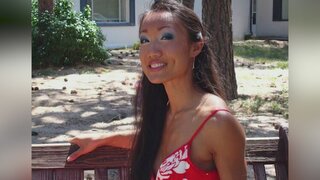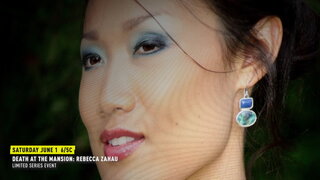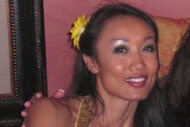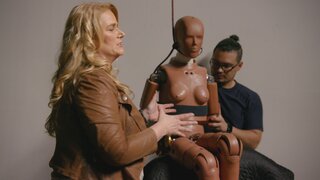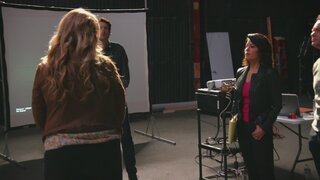Create a free profile to get unlimited access to exclusive videos, breaking news, sweepstakes, and more!
Can The Hyoid Bone Unlock The Mystery Of How Rebecca Zahau Died? Paul Holes Thinks So
Can a particular bone answer the question of whether suicide or homicide was at play in the mysterious Rebecca Zahau case?
The manner in which Rebecca Zahau died at the Spreckels Mansion in Coronado, California, has long been debated, both online and in court.
On July 13, 2011, authorities found Zahau, 32, lying on the grass in the rear courtyard of the beachfront mansion, according to a San Diego Sheriff's Department report obtained by Oxygen.com. That fateful day, she was naked, and her hands and feet were bound with red polypropylene rope. Her boyfriend Jonah Shacknai’s brother, Adam, claimed to have found her hanging from a second-story balcony before cutting her down. He was the only other person on the mansion grounds when she died, according to the sheriff’s department.
Those who believe Zahau killed herself claim that she had reason to be distraught: Days before, her boyfriend’s 6-year-old son, Max, was injured in a freak accident.
Zahau was babysitting Max Shacknai when the accident happened. She said she was in a bathroom when she heard a loud noise. She came out to find Max lying in the mansion’s foyer by a set of stairs on the floor, seriously injured, Town & Country reported. He succumbed to his injuries three days after Zahau died. His death was ruled accidental.
Zahua’s death was officially ruled a suicide, but her family didn’t believe that. A civil court didn’t either. In a 9-3 decision last year, a jury found Adam Shacknai liable for her death, ordering him to pay $5 million in damages. However, Adam Shacknai appealed the decision, and in February, his insurance company settled with Zahau’s family for roughly $600,000, according to the Los Angeles Times.
Adam Shacknai maintains his innocence.
Cold case investigator Paul Holes also questions if Zahau’s death was a suicide, and he points to one of her bones as evidence.
Holes, the detective who helped identify a suspect in the Golden State Killer case, told the producers of “Death At The Mansion: Rebecca Zahau” that he evaluated the mansion crime scene.
He explained one theory about what could have happened:
“She was killed through manual strangulation up in the bedroom and then ultimately was placed down on the grass,” Holes posited to Oxygen. “And law enforcement was told that she was found hanging.”
The “red flag” that led Holes to speculate that she was not killed by the actual hanging was the lack of trauma to a certain bone in Zahau’s neck.
“For me, the biggest thing in my mind that I really want to dig into further is the amount of damage to her neck,” Holes said. “If this was this true long-drop execution hanging, I would expect a lot more trauma, if not near decapitation — broken neck, internal decapitation, or full decapitation after this victim had dropped nine to 10 feet.”
Additionally, Holes said that although her neck was not severely damaged in the way he’d expect from a long-drop hanging, he did notice that Zahau’s hyoid bone and voice box — or larynx — were fractured.
Well, what exactly is a hyoid bone?
It’s the horseshoe-shaped bone located in the middle and front of the neck, at the root of the tongue and between the lower jaw and voice box. It’s the only free-floating bone in the human body, meaning it’s not connected to any other bone. Instead, the hyoid connects to ligaments and muscles, including the tongue.
“With Rebecca, the left edge, the left end of the hyoid has been fractured,” Holes told Oxygen. “Generally, when you see a fractured hyoid, that's usually indicative of manual strangulation.”
Although a hanging could, in theory, force the U-shaped bone to fracture, Holes said that during recreations of Zahau’s hanging, the rope didn’t contact that part of the neck — the very part that was fractured.
Holes used a crash dummy to recreate the scene of Zahau’s death by dropping it, mimicking a hanging suicide. But, he said, the dummy’s hyoid bone wasn’t injured the way Zahau’s was.
“So, none of the drops in the crash test dummy explained how the injuries low down — the hemorrhaging, the bruising, deep bruising in the strap muscles in the front of her neck — how those occurred in this hanging,” he said.
Holes’ theory has cast even more mystery and speculation on Zahau’s mysterious mansion death. The official ruling has remained that Zahau committed suicide.
